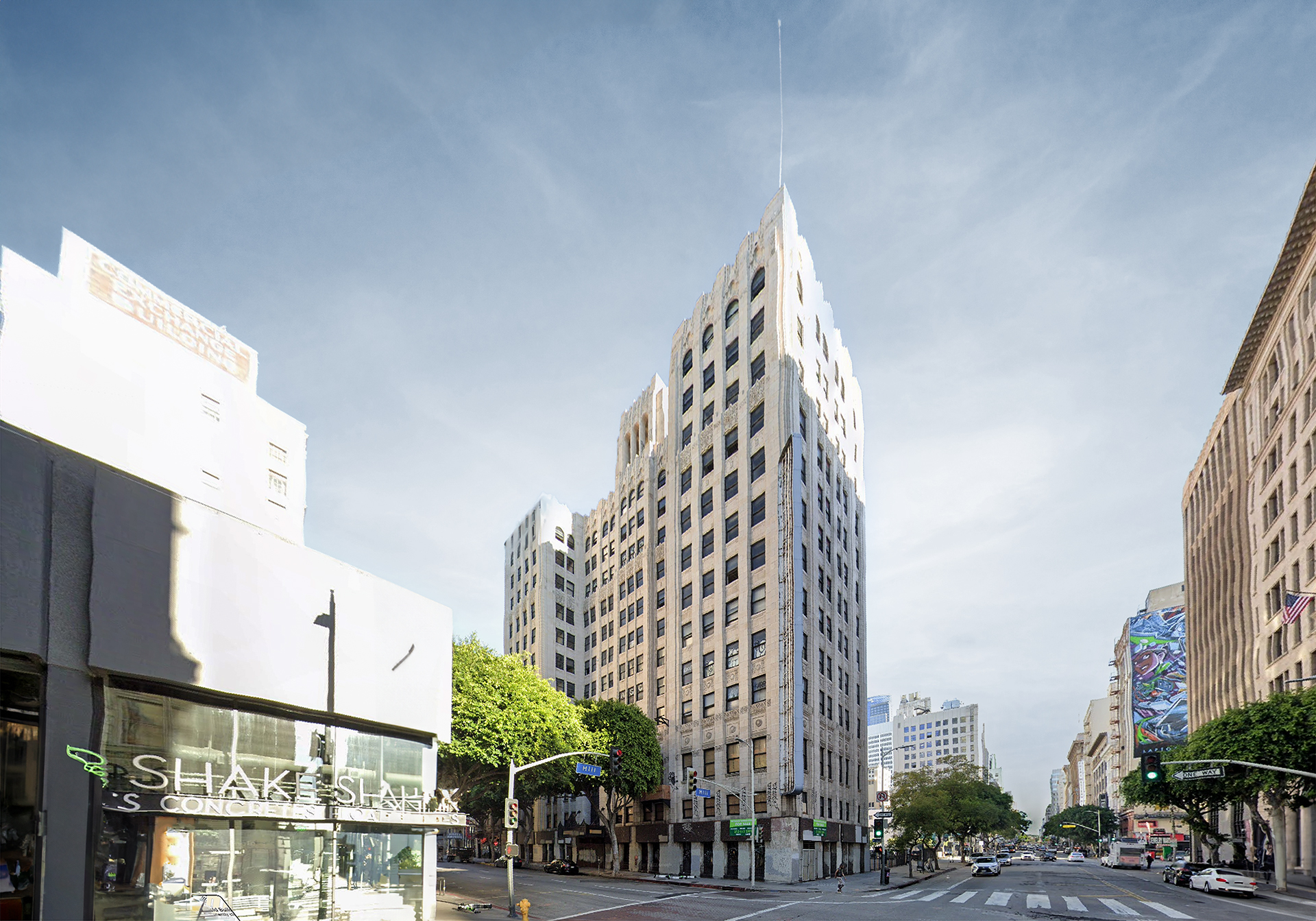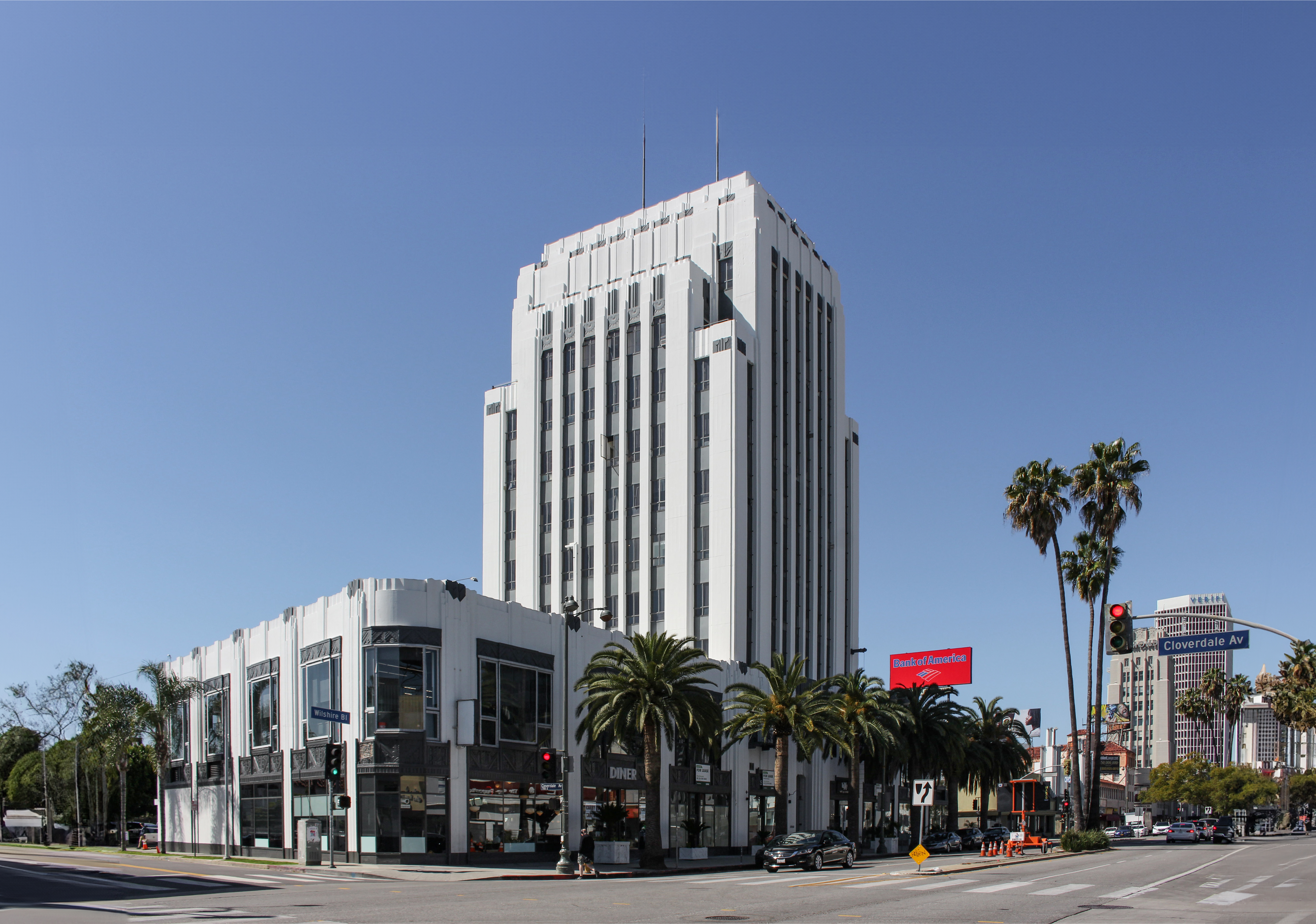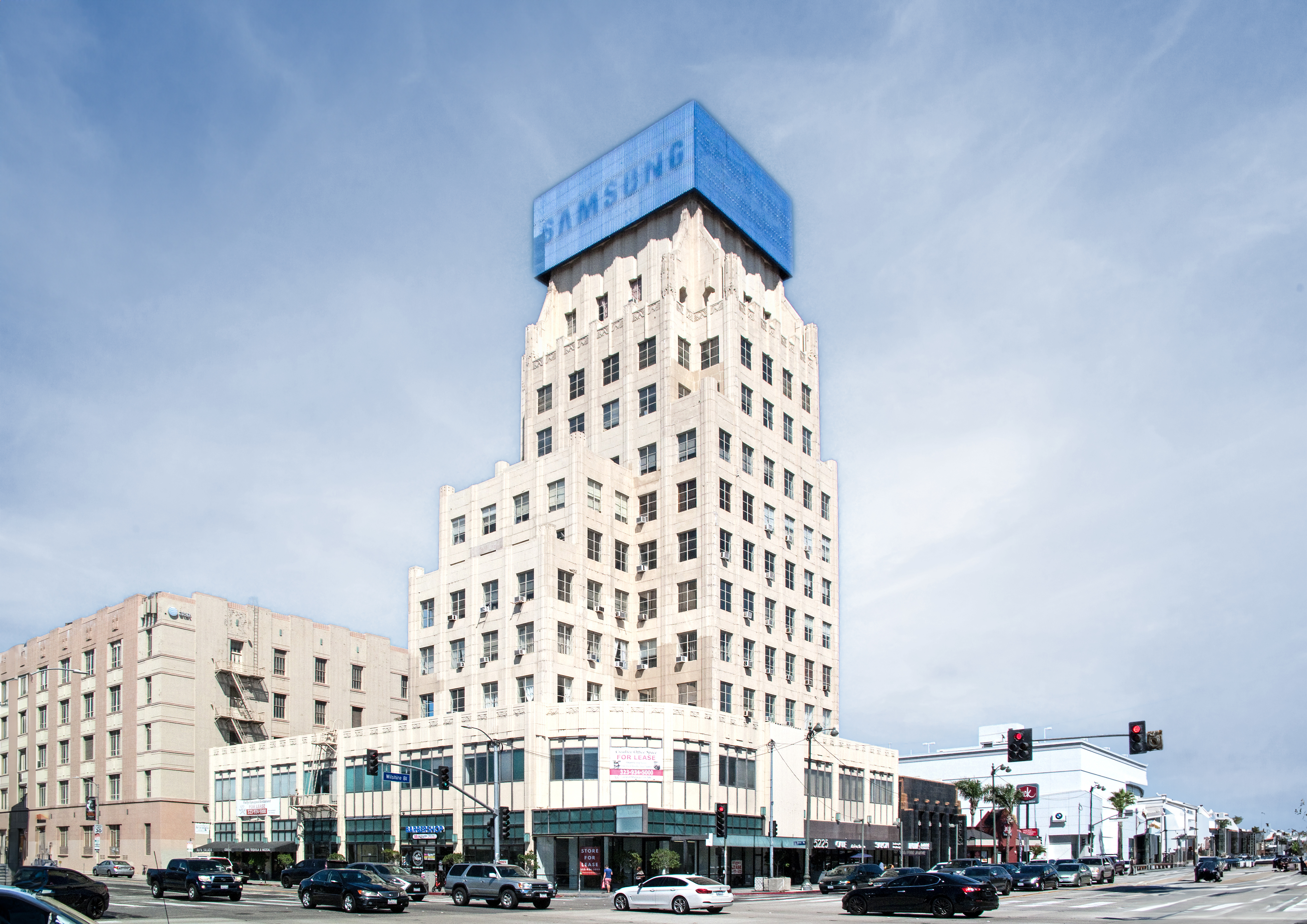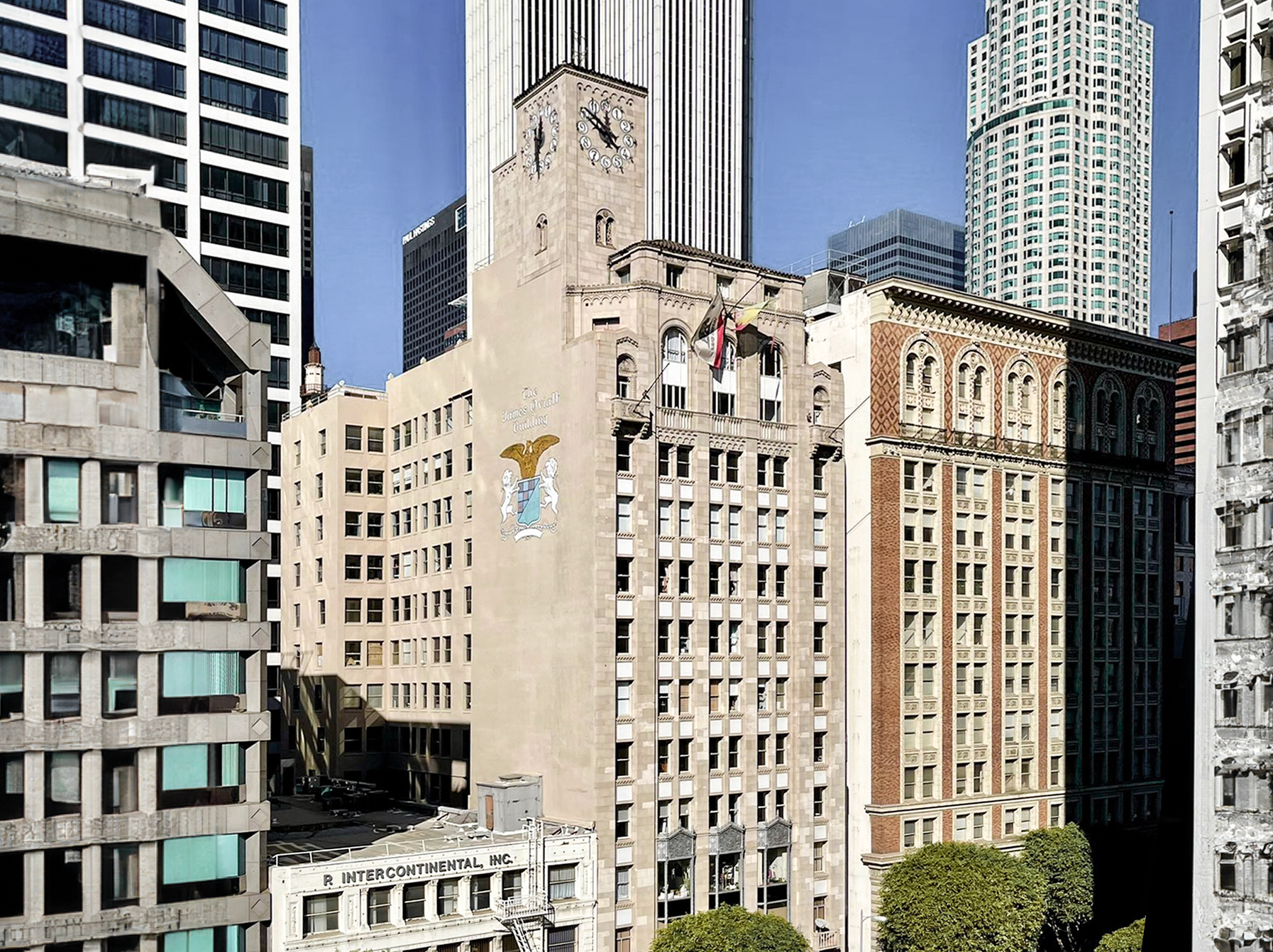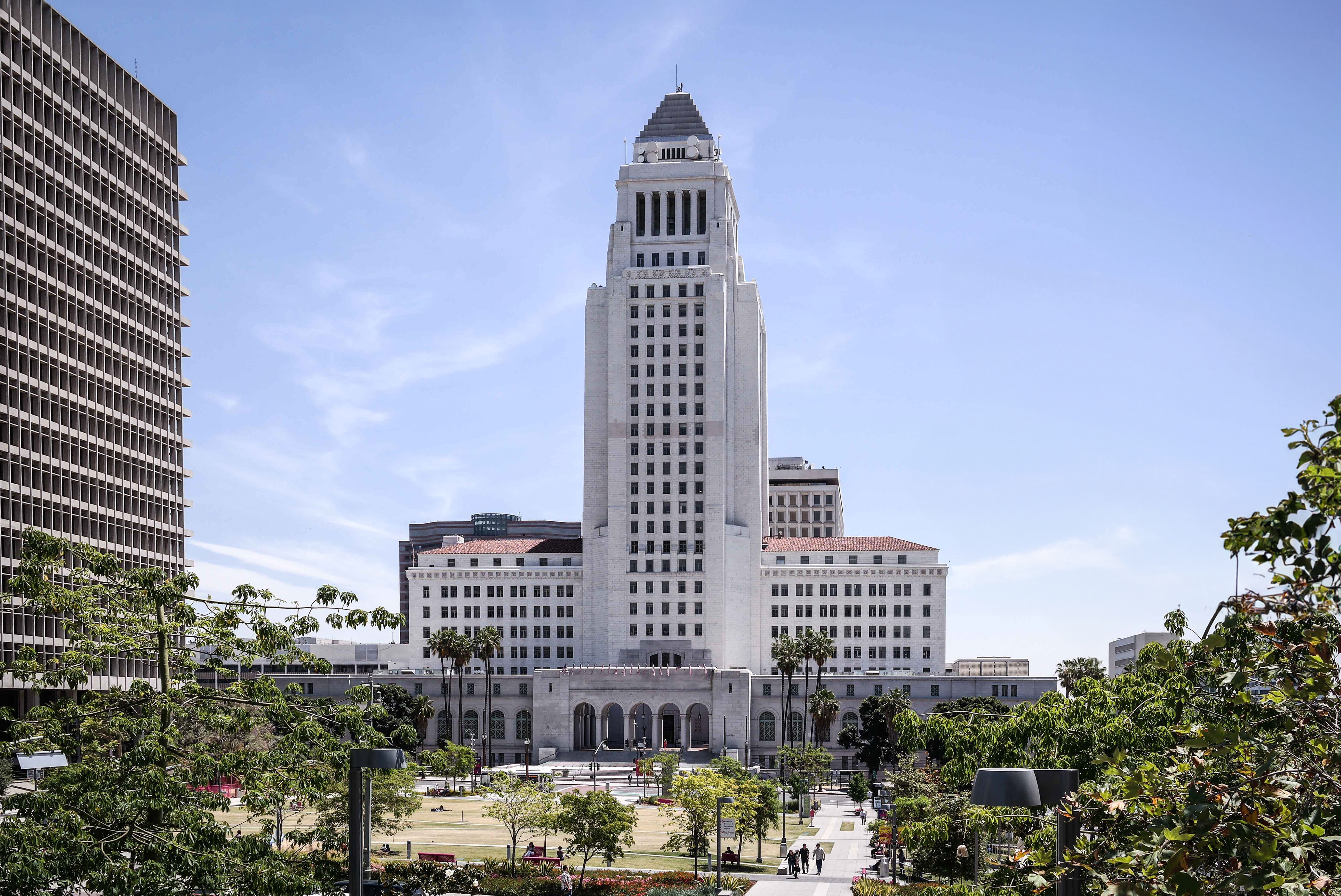The Garfield Building is an Art-deco skyscraper designed by Claud Wilbur Beelman and built between 1928 and 1930 in Los Angeles, CA.
Its precise street address is 403 W. Eighth Street, Los Angeles, CA. You can also find it on the map here.
The Garfield Building is a structure of significant importance both for the city of Los Angeles and the United States as a nation. The building embodies the distinctive characteristic features of the time in which it was built and the Art Deco style. Because of that, the Garfield Building was officially included in the National Register of Historic Places on June 25th 1982, and was also included in the Los Angeles Register of Historic Places on March 17th 1982.
The building underwent a major restoration in 1970.
